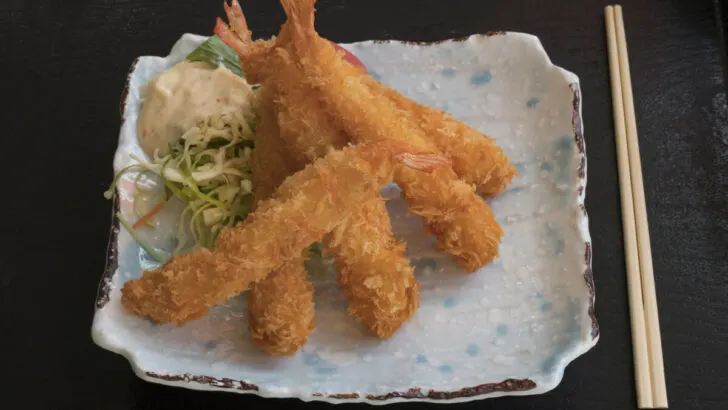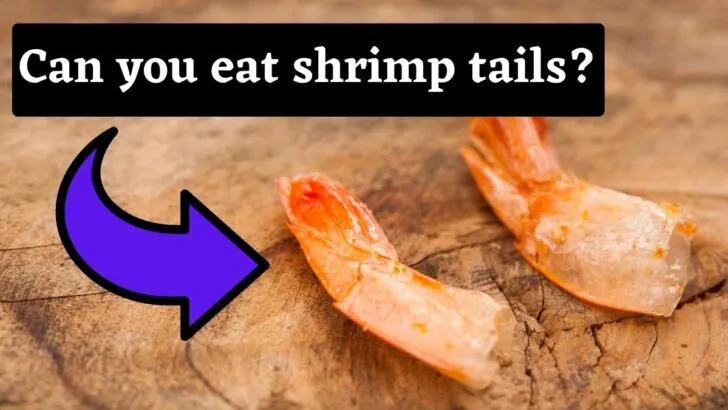You see a dish with small pink shrimp delectably presented and garnished. You want to eat the whole thing, but can you eat shrimp tails? .
You can eat shrimp tails, but they’re not really meant to be eaten. They mainly stay in for flavor while cooking and then presentation.
Before you decide whether you should eat shrimp tails the next time, read on below to find out more about shrimp tails and whether consuming them is nutritious or not.
Are Shrimp Tails Edible?
Shrimp tails are edible. They might have a chewy texture, but they are bursting with flavor, especially tails on small shrimps.
Shrimp tails on small ones might look hard, but you can easily bite it and eat it. But still, if you don’t like the texture, there’s no harm in choosing to leave it even though it is edible.
If the shrimp is larger, the tail is also larger and harder. So, if you think that you can’t bite through it, it is better to leave it because since it is not soft like shrimp meat and could easily be a choking hazard.
Even if you don’t choke on it while biting, eating hard shrimp tails might not look pleasing if you’re eating in a formal setting.
Can Pets Eat Shrimp Tails?
Pets like cats and dogs do not chew their food well before eating it. Therefore, if you’re giving shrimps to your pets, make sure that you remove the tails, especially if the shrimp is large and the tail is hard.
If they eat the tail and don’t chew it, it may be a choking hazard.
Even if they do swallow it, the hard material could cause damage to their intestines.
Can You Eat Cooked Shrimp Tails?
If the shrimp dish is well cooked, the tail might come off if the chef hasn’t removed it. However, the chef might choose to keep the tails for presentation.
Since shrimp tails are cooked, you can eat it if you prefer the taste and texture.
In fact, a small shrimp with a chewy, instead of a hard tail would be bursting with flavor. Many people also love the crunchy texture.
But as mentioned before, if the shrimp is large and its tail is hard like fish scales, it is recommended that you don’t eat it, even if it is well-cooked.
If you are allergic to shrimp, you will be allergic to shrimp tails too. So, even if it is cooked, a person who is allergic to shrimp shouldn’t consume it.
Are Shrimp Tails Good For You?
Shrimp tails don’t have any adverse side effects unless you are allergic to shrimp. In this case, you wouldn’t consume shrimp at all, let alone shrimp tails.
While many restaurants remove shells and tails before cooking, or keep the tails for presentation purposes, the compound that makes up the shells and tails is good for health.
Proteins and Minerals
Even though it may be difficult to digest, the chitin in the shell and tails have keratin protein.
Other minerals include phosphorus, sodium, chlorine, calcium, vitamin B12, selenium, and zinc.
Dried Shrimp Tails
If the shrimp tails are dried and then consumed, they offer quite a lot of nutrients. This includes a high level of amino acid and glutamic acid. Also, dried shrimp is free from bacteria, which is why it could be ground and added to your diet.
Calories
Also, shrimp shells and tails are low in calories and carbs.
In a 3-ounce serving, there are only 84 calories. In addition to this, 90% of the calorie content is from protein and not fat, making it a great add-on to one’s diet.
Iodine
The iodine found in shrimp exoskeletons also helps regulate the thyroid function, therefore, preventing chronic thyroid issues. Iodine also boosts mental health.
Shrimp Tail Allergies
Shrimp is one of the most common allergenic foods. Proteins called tropomyosin, arginine kinase, or hemocyanin in shrimp is the cause of most allergic reactions.
If someone is allergic to shrimp or shellfish, they would also be allergic to shrimp exoskeleton including the shell and the tail.
Why Do Restaurants Remove Shrimp Tails?
Many restaurants remove shrimp tails before cooking. However, many chefs prefer to keep it for presentation and style.
Deep Fried Shrimp

Deep fried shrimp’s tail is quite crunchy and delicious. Since it is a finger food, the tails are used to hold the shrimp and eat it. Many eat the tails because of the texture, but many prefer to leave it too.
Shrimp Pasta
In pasta, salads, and stir fries, chefs usually remove shrimp tails because for those who don’t prefer tails, getting a tail while eating might be a nuisance.
Shrimp Stock
The shrimp exoskeleton and the head make the shrimp stock very tasteful because the cartilage and bone typically hold the most flavor. Therefore, chefs prefer to keep the head and the tails on for making shrimp stock.
Summing Up If You Can Eat Shrimp Tails
Shrimp is one of the crowd favorites when it comes to seafood. Leaving out the tails is a common practice, but contrary to common belief, shrimp tails are edible. In fact, tails of small shrimps are bursting with flavor. Deep fried shrimp tails are quite crunchy and many like eating it.
Shrimps are also rich in minerals including zinc and iodine. Dried shrimp tails are more nutritious too. Despite their nutritional value, you shouldn’t consume tails if the shrimp is large and the tail is hard.


